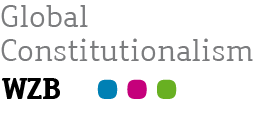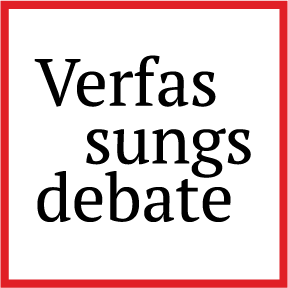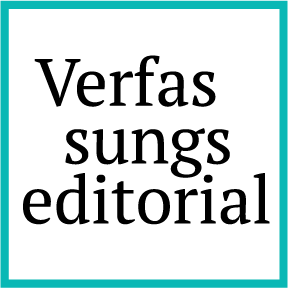Twitter’s Modi Operandi
Lessons from India on Social Media’s Challenges in Reconciling Terms of Service, National Law and Human Rights Law
“The Internet is splintering”, worries the New York Times, “Facebook and Google exist in so many countries. Who should decide the rules in each one?” One easy answer would be to say: Each country should have its own laws, limited by global human rights. Platforms should respect these laws. But this answer fails to consider the full picture. Twitter’s recent travails in India can tell us a lot about the challenges of deciding who is best positioned to decide what can be said online – companies or governments.
India is not only the world’s largest democracy, it also accounts for the largest number of internet shutdowns and take down requests to social media companies globally. The lessons that the treatment of social media companies by Indian authorities and their actions (and reactions) can teach are important. The recent stand-off between Twitter and the Government of India (GoI) over suspending more than a thousand accounts supportive of farmers’ protests ended with Twitter falling in line with the GoI’s demands. This may set a dangerous precedent for digital platforms enabling other democratic governments to stifle online dissent.
India as bellwether for platform governance
Narendra Modi’s government is applying a repressive approach to free press online. It is part of a process of democratic backsliding, partially clad in platform regulation. This development points to a fault line between state and private power that, in terms of the perils for internet freedom, easily keeps up with the corporate dystopias that usually haunt democracy theorists from the Global North. Looking at India can help us broaden the picture of state-centred, national approaches to platform governance.
With 560 million internet users, India is the second-largest internet market and the largest digitalised democracy. Still, 50 per cent of India’s population is yet to go online, though the rate of internet penetration is rising fast year-on-year. It is accelerated by the government’s massive digital push: cheap data prices and smartphones have spurred people onto the mobile internet, making India a critical market for tech giants. Interactions between platforms and the government in India, with its diverse population, enormous market, and massive push towards digitalisation, can therefore serve as a bellwether for emerging trends and trajectories of platform regulation and governance.
Twitter v. the Government of India
On 4 February 2021, the GoI’s Ministry of Electronics and Information Technology ordered Twitter, which has over 34 million users in India, to suspend more than 250 accounts. The accounts, which included activists and a mainstream media publication, were suspended by Twitter without prior notice to the owners, citing a ‘legal demand’ from the GoI.
Media reports suggested that the suspended accounts had been critical of the government and police, and supportive of the ongoing farmers’ protests against the new farm laws passed by the Modi government in a heavy-handed manner. The discussion around these laws became so divisive that journalists merely covering them were subjected to “baseless prosecution”, according to Human Rights Watch. The GoI claimed that many of the Twitter accounts amplified hashtags that alleged that Prime Minister Modi was committing genocide against farmers.
Following public outrage over the accounts’ suspension, Twitter restored them, only to block a few of them again, following the GoI’s “warning” that Twitter’s representatives could face criminal prosecution, resulting in a seven-year imprisonment and fine, for non-compliance (see Section 69 A, para. 3 of the Indian IT Act). On 8 February, the GoI ordered Twitter to take down 1178 accounts, claiming they were operated by Pakistani and Sikh violent extremist groups, collectively called Khalistanis. While Twitter blocked 500 accounts, it also published a blog post defending the freedom of expression. It explained why it would not block accounts of journalists, activists, and news media. In doing so, Twitter tried to create a middle ground (presumably to mitigate the national backlash and ensure the safety of their employees): “[b]ecause we do not believe that the actions we have been directed to take are consistent with Indian law, and, in keeping with our principles of defending protected speech and freedom of expression, we have not taken any action on accounts that consist of news media entities, journalists, activists, and politicians. To do so, we believe, would violate their fundamental right to free expression under Indian law” (emphasis added).
In its blog post, Twitter originally claimed that the GoI was acting beyond its powers. However, its referral to “our principles” subverts the later-used notion of “protected speech”. “Protected” by what? Human rights? Indian law? If Twitter believes that the GoI violates the Indian Constitution or Indian law, then why refer to Twitter’s principles?
In response, government representatives started to promote a local alternative to Twitter, called “Koo”, projecting it as a major platform for the government’s communications online and encouraging people to join. On February 12, the Supreme Court of India sought responses from Twitter and the GoI, in a public interest litigation filed by Vinit Goenka, a key member of the Delhi division of the formidable IT and Social Media Cell of the Bharatiya Janata Party ( the political party, which leads the coalition government in the centre under Prime Minister Modi) on the mechanisms to check fake news and hate speech on Twitter. The PIL accused Twitter and other social media platforms of hosting anti-India posts that could trigger violence. The BJP’s IT Cells have incidentally been accused of massive propaganda campaigns and Twitter had earned their wrath by once flagging the BJP IT Cell chief’s post as “manipulated media”. The same day, Ravi Shankar Prasad, a member of the BJP and the Minister for Electronics, IT, and Communications as well as of Law and Justice, warned Twitter on the floor of the Parliament not to go against Indian laws. In the evening, following a meeting with the government representative Twitter – again – blocked 97 percent of the accounts ordered by the government.
Twitter, like other major US-origin platforms, refers in its terms of service to the applicability of US laws, including those regarding free speech. This is especially relevant in non-EU countries with which the US government has entered into free trade agreements (FTA). In such cases, the US government might come to the defence of US tech companies. In India, with whom the US does not have an FTA, Twitter faced the problem of dealing with the GoI’s account suspension orders without support from the US government, as well as without a judicial order or sound reasoning. Twitter’s meandering response reflected its double bind: it has business interests as a tech company that relies on good relations with a government that has banned apps in the past. At the same time Twitter is strongly committed to free speech.
Legal situation in India
The GoI justified its orders by pointing to Section 69A in the Information Technology Act (2000), which authorizes the central government to block public access to any information online, in the interest of the sovereignty and integrity of India, friendly relations with foreign states, and public order. This section was passed without much debate in Parliament, and with no reasons provided for its inclusion. In conjunction with the Information Technology Rules (2009), it gives broad powers to the government to ban online content and prosecute platform intermediaries in case of non-compliance. It has been criticised for executive overreach as the orders are shrouded in secrecy. Rule 16 of the Blocking Rules (2009) allows GoI account suspension orders to remain strictly confidential – Inviting abuse and curbing the societal discussion of requests.
These blocking rules stand in unresolved conflict with the right to freedom of expression guaranteed under Article 19(1)(a) of the Constitution of India. In a landmark decision, overturning a separate provision of the Information Technology Act, the Supreme Court of India assessed Section 69A as, in principle, constitutional. It did so pointing to procedural safeguards built into the law on paper, without assessing their fulfilment in practice. It is considered questionable whether these safeguards are met in practice, which is hard to assess due to the opacity of the processes. Consequently, no statements can be made about procedural safeguards towards the Twitter takedown-orders.
Overcoming the stand-off with human rights?
Twitter’s run-in with the GoI has brought to the fore concerns over government censorship by way of platform regulation, which reflects larger questions on freedom of opinion and expression globally.
At the very least, the GoI’s order has been inconsistent with the strong protections offered to freedom of expression under Article 19 of the International Covenant on Civil and Political Rights (ICCPR), which India had ratified. Any restriction to free expression must meet the criteria of legality, necessity and legitimacy, as set forth in General Comment 34. For some of the requested (and intermittently executed) suspensions, such as that of the mainstream magazine, The Caravan, which has reportedly only covered the protests, the legitimate aim is missing.
So, should a private company be responsible for assessing and protecting speech, against speech-restricting laws of a country of operation, versus its own private content moderation policies? If so, how?
Thus far, many companies are tip-toeing around conflicts between International Human Rights Law (IHRL) and legal requests under national law in their policies. For example, Twitter and Google both state that they prevent any content found to be illegal under local law from being accessed from the respective jurisdiction, while at the same time claiming their policies are rooted in IHRL (here and here). Their transparency reports show they do not act on all government claims. However, they don’t publicly cite IHRL as a reason for this, merely listing other exemplary reasons for noncompliance such as differing interpretations of the respective national law or practical issues. This is a notable difference from Facebook, which publicly claims to reject requests that “are inconsistent with international human rights standards”, in line with their commitment to the NGO Global Network Initiative (GNI). Google is also a GNI member, Twitter is not.
Either social media companies abide by applicable local law and face outrage from abroad for being complicit in authoritarian policies and IHRL violations, or they put themselves above (local authorities’ interpretation of) local law and face local outrage, restrictions, and perhaps prosecution of employees in the respective country. In India, there is also the substantial risk of being locked out of the second-largest internet market entirely. The same law invoked against Twitter was used to ban and remove virtually every app from Chinese companies (including TikTok) from Indian App Stores in 2020 . Officially, the GoI took this step due to alleged unauthorised data mining and profiling by “elements hostile to national security and defence of India”, but it was widely interpreted as a reaction to the border conflict with China. The GoI, therefore, has a history of weaponizing access to its internal market for political gain.
In the end, Twitter largely acceded to GoI demands and to market compulsions. Its earlier attempt to hold its ground by not accepting the government’s orders completely, affirming its commitment to the country’s laws, proved to be on shaky ground when push came to shove.
The way forward
IHRL has been advanced as a key to improving content moderation for years. While the approach has been widely discussed and is not free from criticism, this case shines a light on its potential. Providing a baseline for denying authoritarian requests is one of the most convincing arguments for companies to look to IHRL, which, as the former UN Special Rapporteur on the promotion and protection of freedom of opinion and expression, David Kaye put it, “gives companies the tools to articulate their positions in ways that respect democratic norms and counter authoritarian demands.” In other words: If Twitter pointed to IHRL instead of its corporate values this may have resulted in a “stiffened spine”, a smaller backlash and perhaps even a reconsideration on the compatibility of the requests also with the constitutional law of India.
If individual companies going against national states as human rights arbiters is fraught with difficulties, what is the way forward for such cases? A possible path might be industry-wide self-regulating institutions that decide over the conformity of government orders with IHRL, providing companies an external, and ideally widely accepted, source of legitimacy to justify cases of noncompliance with national orders. Against this background, it is no coincidence that IHRL, as a substantive standard in such cases, was advanced in conjunction with new institutions for social media self-regulation such as Social Media Councils.
While this may remind readers of Facebook’s Oversight Board that will soon decide over the companies’ suspension of Trump, it is important to note the Oversight Board is not in charge of checking how the company deals with legal requests under national law (see Art. 2, Section 1.2.2. of its Bylaws and Step 2 of the Case Selection Procedure in its Rulebook). It is therefore just a first and inevitably imperfect iteration of such a concept. Then again, companies may be ready to take drastic steps when confronted with national decisions they disagree with, as Facebook’s exit from the Australian news market has shown. Twitter may find joining the GNI, or even creating a human rights-based Oversight Board-like institution is the way not just out of conflicts with national governments, but also towards living up to its old self-description as “the free-speech wing of the free-speech party”.
There are no easy answers. As Shira Ovide put it in the New York Times, “if you’re thinking all of this is a mess — yes, it is. Speech on the internet is a relatively new thing, and we’re still very much figuring it out.”




Excellent piece. Thanks for writing.